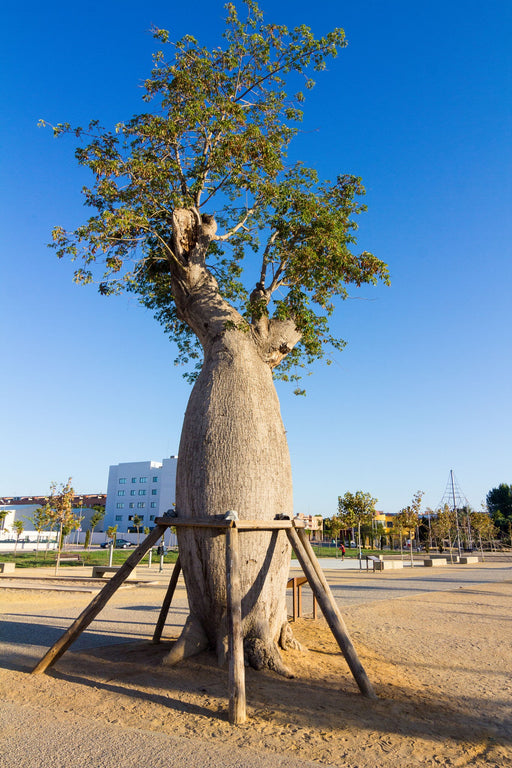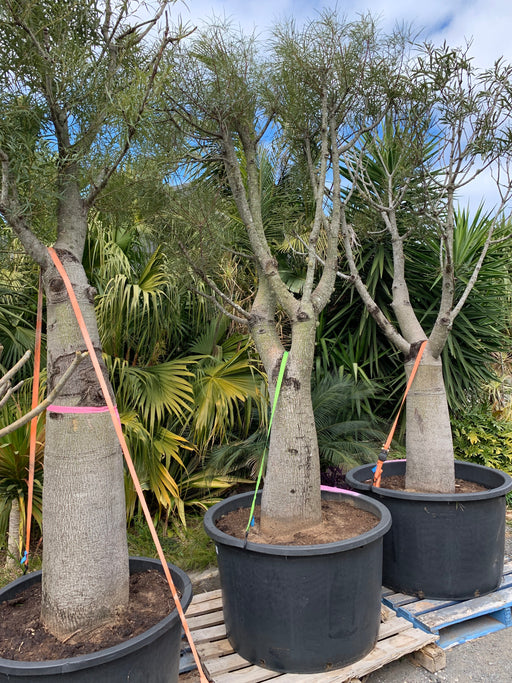Adansonia digitata
Adansonia digitata, commonly known as the Baobab tree, is a large and iconic tree species native to the African continent. It belongs to the Malvaceae family and is one of the most distinctive and recognizable trees in the world. Here is a description of Adansonia digitata:
-
Size and Appearance: Baobab trees are known for their massive size and unique appearance. They can grow up to 98 feet (30 meters) tall and have an extremely thick, barrel-like trunk that can reach a diameter of 36 feet (11 meters) or more. The trunk is often bottle-shaped, tapering towards the top. The bark is smooth and grayish-brown in color.
-
Branches and Canopy: The branches of the Baobab tree spread out like roots, giving it an upside-down appearance. When the tree is leafless during the dry season, its silhouette can resemble the appearance of a root system. During the rainy season, the tree produces large, palmate leaves, which are composed of several leaflets.
-
Flowers: The Baobab tree produces large, showy, and pendulous flowers. The flowers are white with a creamy yellow center and have a pleasant fragrance. They open during the late afternoon and remain open throughout the night, attracting pollinators such as bats and moths.
-
Fruit: The Baobab tree bears large, oblong, and woody fruits known as Baobab fruit or monkey bread. The fruit is about the size of a coconut and has a hard, outer shell. Inside, there is a powdery pulp with a tangy flavor that is rich in vitamin C, minerals, and antioxidants. The fruit is traditionally used in various culinary and medicinal applications.
-
Habitat: Adansonia digitata is well-adapted to survive in arid and semi-arid regions. It is commonly found in savannas, dry grasslands, and lowland areas across Africa.
-
Cultural and Ecological Importance: Baobab trees hold significant cultural and ecological value in African communities. They have been used for various purposes for centuries, such as food, water storage (the trunk can hold a significant amount of water), shelter, and even as places of worship. The trees also play a crucial role in supporting local biodiversity by providing habitats for various animals and insects.
-
Longevity: Baobab trees are known for their exceptional longevity. Some Baobab trees are believed to be thousands of years old, making them among the oldest living trees on Earth.
In summary, Adansonia digitata, or the Baobab tree, is a majestic and ancient species with a distinct appearance and numerous cultural and ecological significances across the African continent.
Filters
Adansonia Digitata
Rajasri Nursery ExportsAdansonia digitata plants, commonly known as Baobab trees, are large, iconic, and unique tree species native to various regions in Africa. He...
View full details

